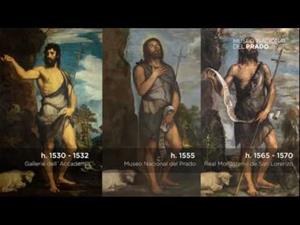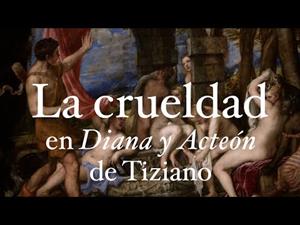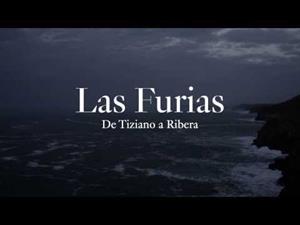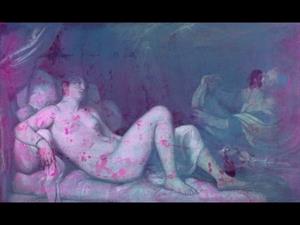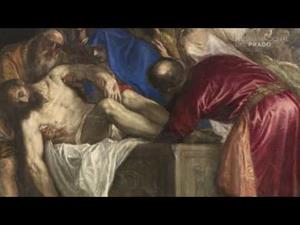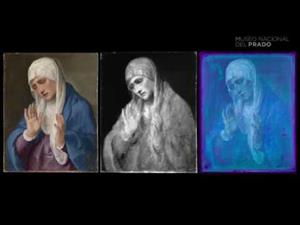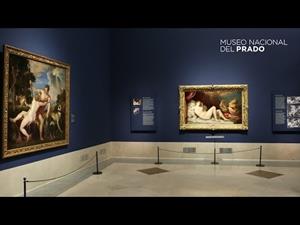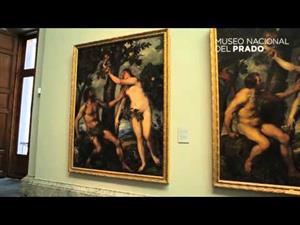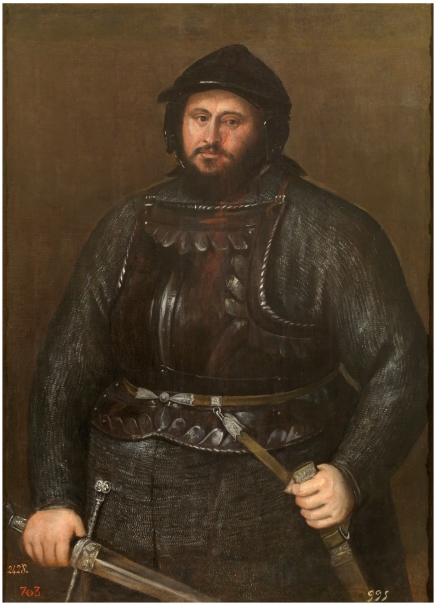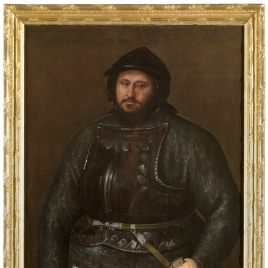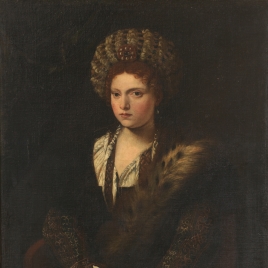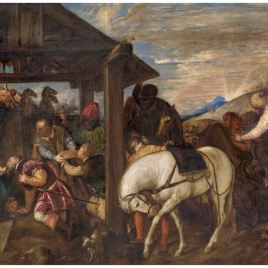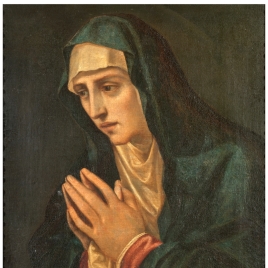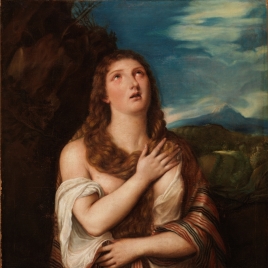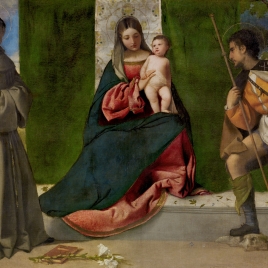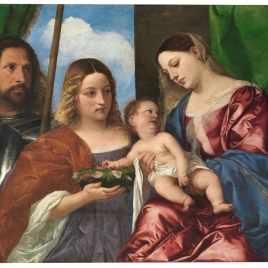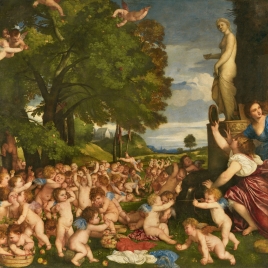John Frederick I of Saxony
1548. Oil on canvas.Room 041
John Frederick I of Saxony (Torgau, 30 June 1503–Jena, 3 March 1554), Duke of Saxony-Wittenberg from 1532, was the principal defender of Luther, a fact that brought him into conflict with Charles V. In 1546 these differences resulted in an armed conflict that culminated at Mühlberg on 24 April 1547 when the Imperial army defeated the Schmalkaldic League and captured its leaders, John Frederick and Philip of Hesse. John Frederick was condemned to death, a punishment that was commuted to life imprisonment in exchange for the surrender of the state capital Wittenberg by his wife, Sibyl of Cleves. In the socalled Capitulations of Wittenberg (May 1547), John Frederick renounced his ducal title in favour of his first cousin Maurice of Saxony, and with it the territories of the duchy of Saxony-Wittenberg, only retaining Thuringia. John Frederick remained a prisoner until 1552 when he was liberated by Maurice of Saxony who had left the imperial side. Prior to 1547, John Frederick had entrusted the depiction of his image to Lucas Cranach (1472–1553), who devised an ambitious iconographic programme that presented him as a champion and defender of the Reformation. Images produced after this date are interesting for the way in which they offer two visions of John Frederick reflecting highly contrasting ideological and religious viewpoints.Titian painted two portraits of the ruler on the instruction of Mary of Hungary, mentioned in her inventory of 1558 they are mentioned: the present one in the Museo del Prado, which depicts John Frederick immediately after the battle, wearing armour and with the wound on his cheek still bleeding; and the other, in the Kunsthistorisches Museum in Vienna, in which the scar has healed. This difference allows us to date the Prado painting to Titian’s first stay in Augsburg (February to September 1548) wich was also confirmed in a later account by Cesare Vecellio, the artist’s nephew.The Vienna painting can be dated to the artist’s second stay in Augsburg (November 1550 to February 1551).The Vienna portrait, whose high degree of finish is comparable to German painting, is notably superior to the Prado painting, which reveals considerable workshop intervention. The latter work is in fact a recreation, as Titian arrived in Augsburg in February 1548, ten months after the battle. It is also unlikely that John Frederick would have posed in this manner for the artist, instead, it is likely that Titian was lent the prisoner’s suit of armour, on display in the armoury in the Alcázar in Madrid during the reign of Philip II.The portrait thus reflects the account by Luis de Ávila y Zúñiga of the capture of John Frederick published in his Comentarios de la Guerra de Alemania (1549). This highly unusual image has been explained suggesting that Mary of Hungary devised and idealized retinue headed by the equestrian portrait of the emperor and followed by members of the imperial family, its generals and finally the defeated, in the manner of a Roman triumph. Nonetheless, as Ferino-Pagden has pointed out, the tone of both portraits differs greatly from those of Italian pitture difaminati in that it depicts a defeated enemy but retains a concern for his dignity.We should bear in mind how, in a similar way, Pietro Aretino’s suggestion of including the emperor’s defeated enemies below the hooves of his horse in the equestrian portrait by Titian was rejected, and also that the sculptor Leone Leoni replaced Germania by the Fury in his Charles V and the Fury. Also surviving are images of John Frederick produced by artists of his circle during his captivity. In 1550 Lucas Cranach joined the Duke and there are paintings and woodcuts of John Frederick executed in Cranach’s workshop in 1551. Peter Gottlandt Rodelstedt, active between 1548 and 1572, was a pupil of Cranach and replaced him as court artist to John Frederick following Cranach’s death in 1553 although the departure of Cranach together with the Duke in 1550 had already left Gottlandt as principal artist of the small court at Tubingen along with Cranach the Younger.The images created by the Cranachs and Gottlandt emphasise the idea of John Frederick as a martyr of the Reformation, the wounded hero who despite the pressures exerted on him refused to yield in religious matters. John Frederick I of Saxony as Daniel, dated 1551, is the most explicit of these ‘images of resistance’. It draws a parallel between the Duke’s time of captivity at the court of Charles V and that of Daniel at the Persian court of Darius (Daniel 6, 4–27), both prisoners for their faith and untouched by pressures to renounce it. John Frederick had already been compared to Daniel in the lions’ den in a play written in 1545 by Johann Chryeus, but it was during his imprisonment that this association took on its full meaning. The Latin inscription on the print explains the similarities between the biblical prophet and the captured Duke, while the one in German indicates that this is a true portrait of John Frederick I, shown amidst the misfortunes of his captivity but comforted by the grace of the Lord. It is worth noting that the print shows the Duke with a ring and chain alluding to his rank but that these elements are absent from Titian’s portraits. ( Falomir Faus, M.: El retrato del Renacimiento, Museo Nacional del Prado, 2008, p. 502-503).


